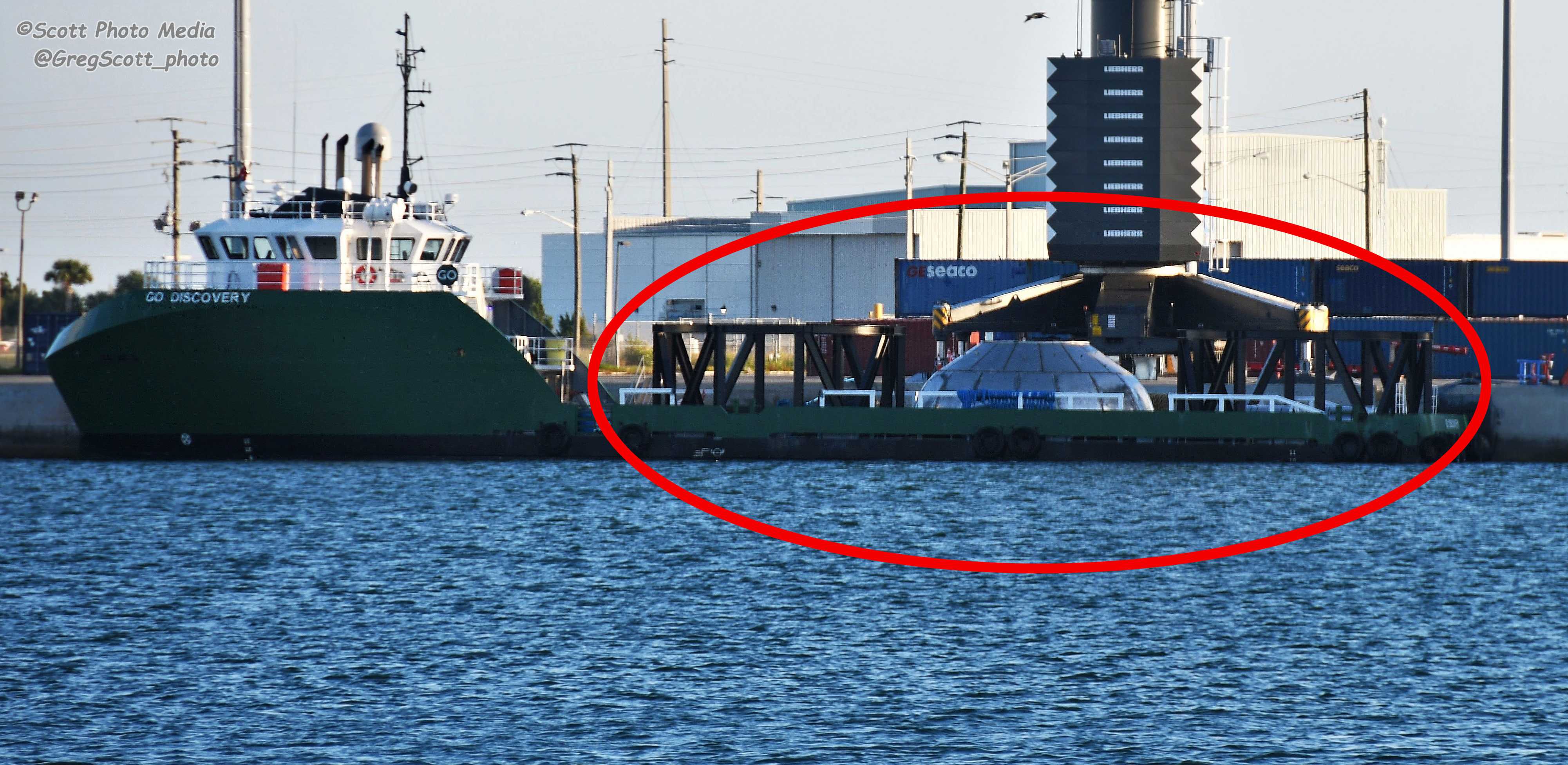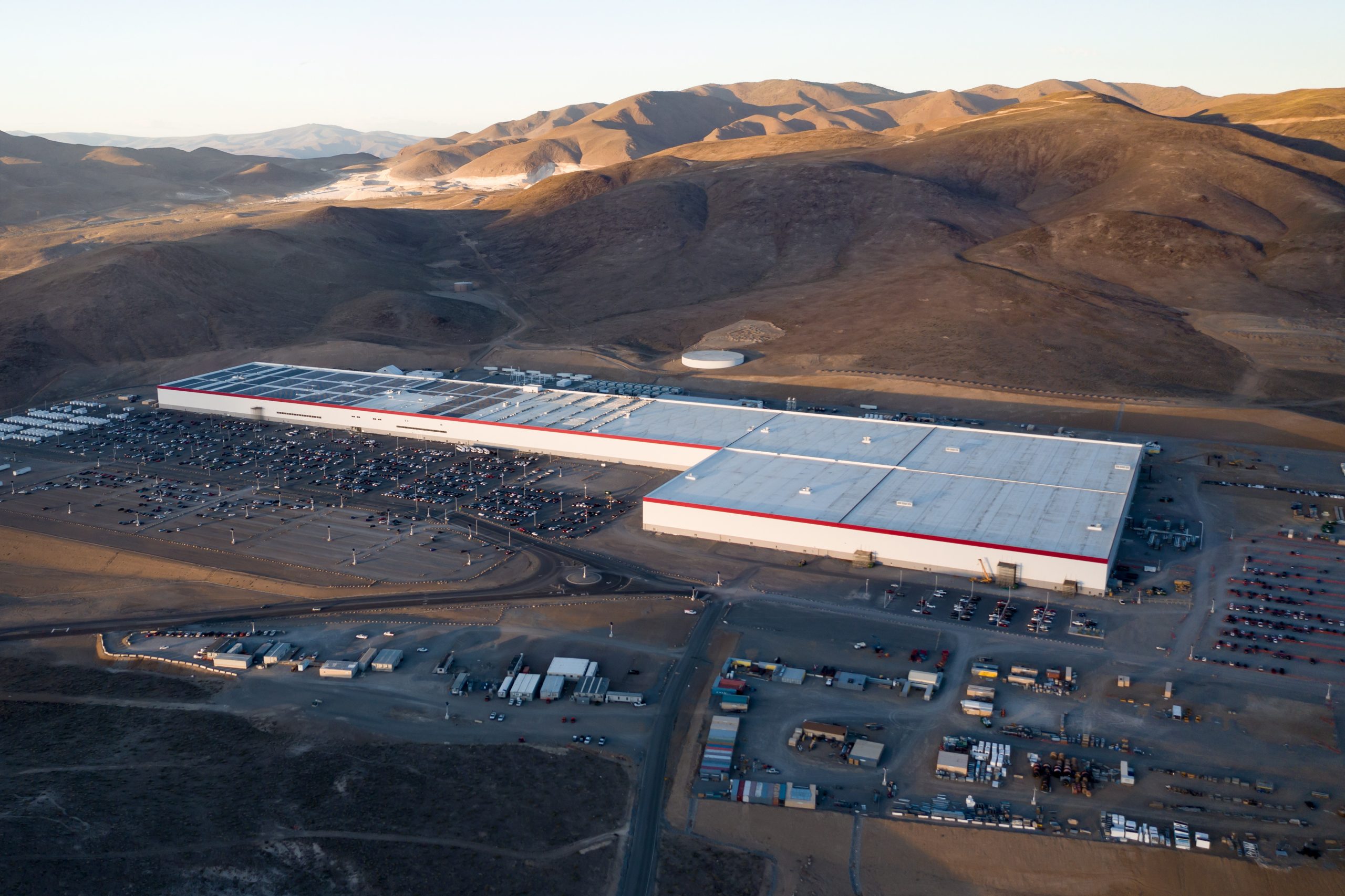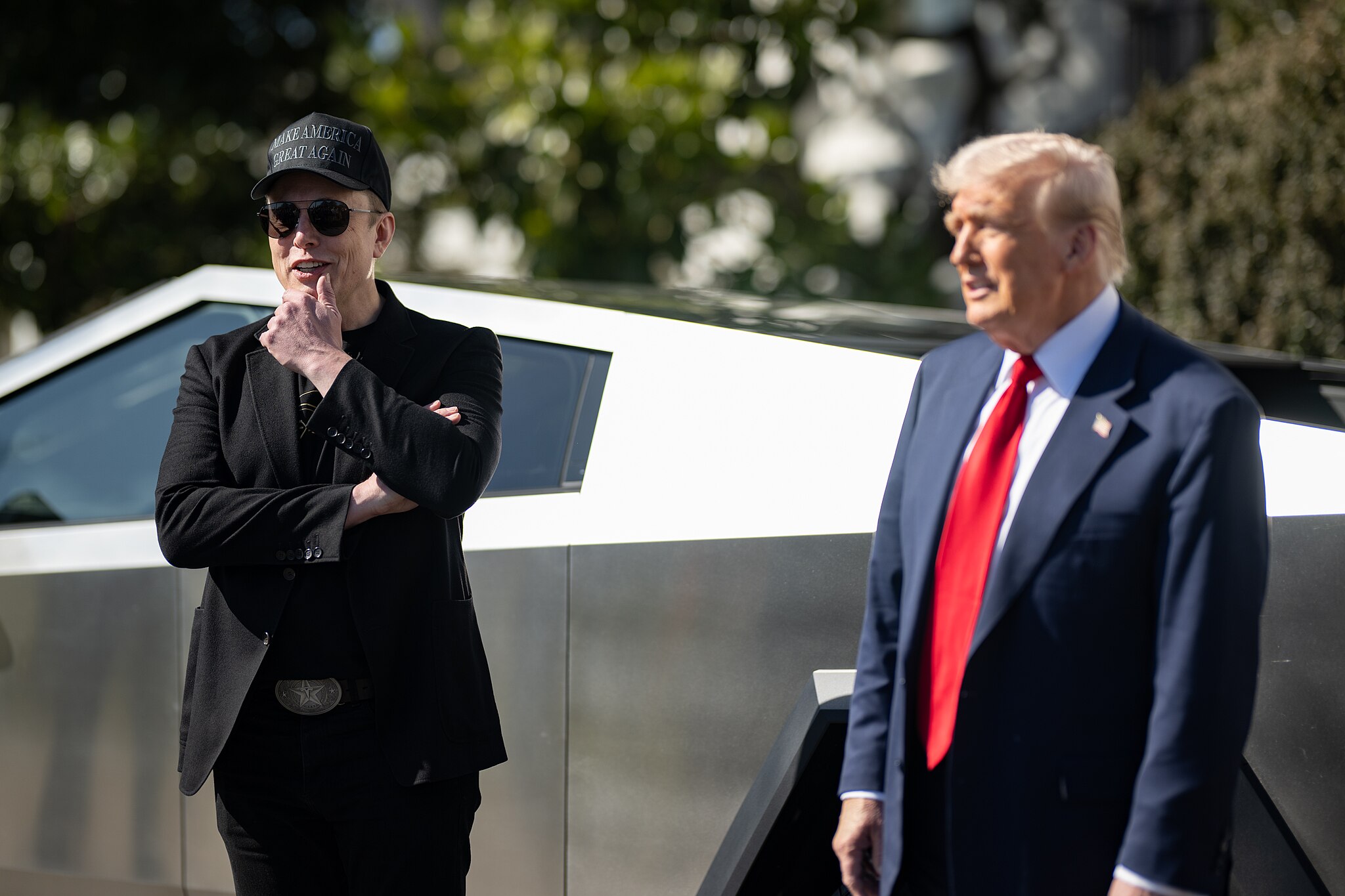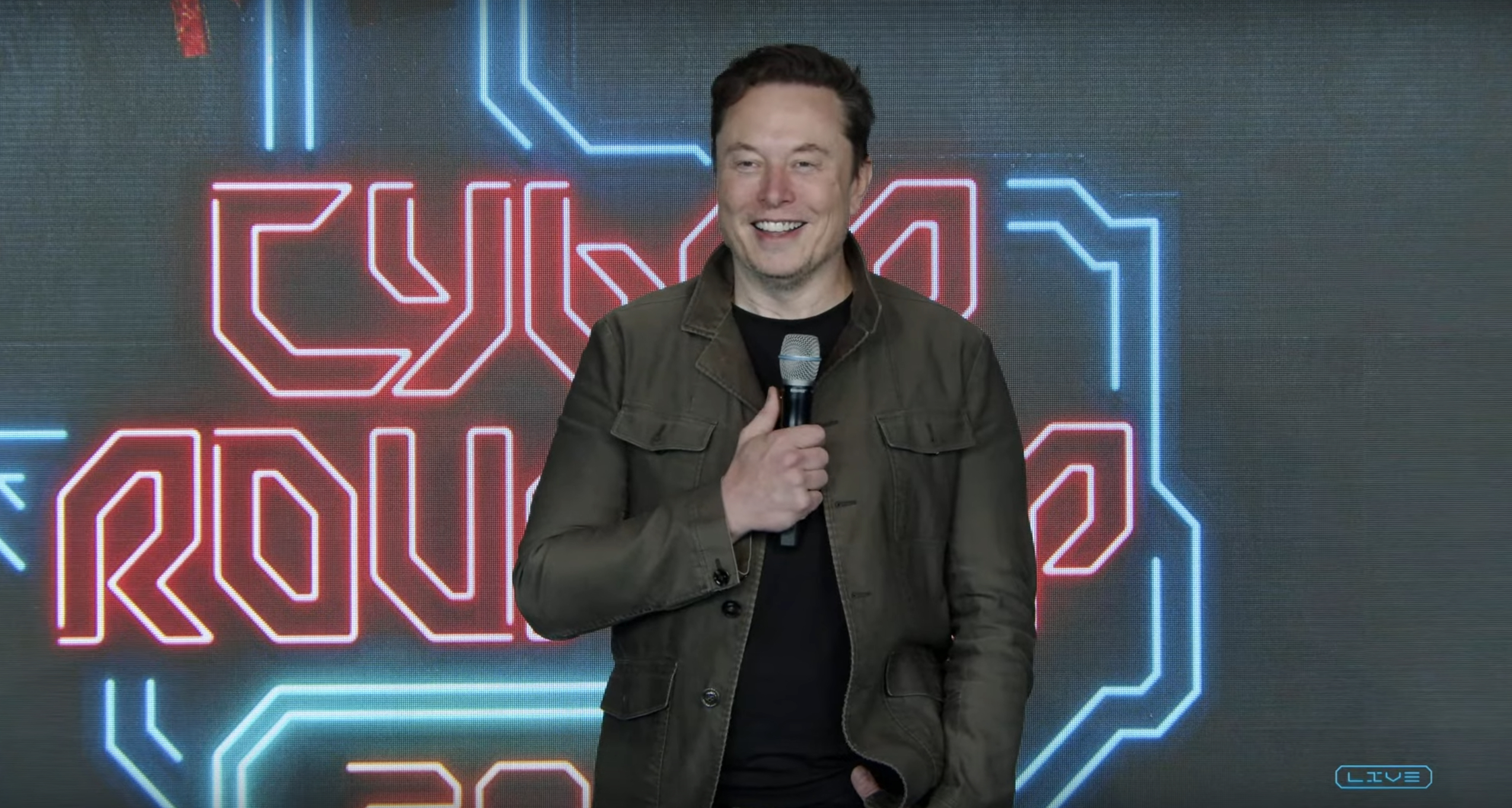

News
SpaceX Starship hardware mystery solved amid reports of Florida factory upheaval
A SpaceX Starship hardware mystery has been effectively solved after rocket parts arrived at Port Canaveral and were loaded aboard a transport ship, seemingly preparing for an unexpected journey by sea.
In an unexpected turn of events, SpaceX appears to be preparing to ship major Starship hardware from its Cocoa, Florida facility to a similar worksite in Boca Chica, Texas. Spotted for the first time in a photo taken by local photographer Greg Scott on November 30th, that hardware – at least two large stands and a nearly-complete steel tank dome – abruptly appeared beside SpaceX’s Port Canaveral dock space.
Seemingly within hours of their appearance, new vessel GO Discovery also arrived in Port Canaveral and parked by the same SpaceX docks. Shortly thereafter, workers loaded her with both build stands and a Starship tank dome and secured the surprise cargo. As it turns out, another local SpaceX-follower and prolific photographer/videographer happened to capture the disappearance of both stands and dome from SpaceX’s nearby Cocoa, FL Starship construction facility, where Starship Mk2 and Starship Mk4 were being built.
This neatly ties up the minor mystery of where that hardware went: SpaceX clearly moved all three parts to Port Canaveral, where they have since been loaded on a small supply ship. Two main questions remain, however: why have they been moved to the port and where are they headed?
The band is breaking up
Unfortunately, it appears that both questions can effectively be answered by a report published by YouTube channel “What about it?!”. According to former Cocoa employee that spoke to reporter and channel creator Felix Schlang, SpaceX has reportedly transferred up to 80% of the Starship facility’s workforce to other groups in Florida and Texas. Instead of the friendly internal competition that pitted Cocoa against Boca Chica in the race to first Starship flight, SpaceX is temporarily slowing down its Florida build operations and will redirect as much of its workforce and resources as possible to Boca Chica.
According to Schlang’s source, this will likely result in several months of relative downtime in Florida, while he was also told that Starship Mk2 and Mk4 are now effectively dead before arrival as a result of several challenging and reoccurring technical issues. Starship Mk2 likely shares some significant heritage with Starship Mk1, which lost its top during a pressure test. Roughly two-dozen steel Starship Mk4 rings may also be scrapped after SpaceX’s Florida team could not overcome a technical hurdle. Per the source, many of those single-weld steel rings were slightly different diameters, making it next to impossible to build a sound pressure vessel (i.e. Starship Mk4) with them.
Combining the appearance of Starship hardware on GO Discovery just yesterday and reports of major Cocoa layoffs, it’s all but certain that the Starship components on Discovery are going to head to Boca Chica, Texas. Schlang’s source also indicated that all affected employees were given the option to transfer to Boca Chica or Hawthorne, a prime indication that this abrupt change in plans is more a strategic move than a financial one. With any luck, most affected employees will be able to transfer to Florida pad operations or Boca Chica, although such a major and abrupt change is likely a no-go for anyone with major ties to South Florida.
The Starship dome and stands now likely headed for Boca Chica were built over the course of a month or two in Florida, meaning that they were either built under the impression that they would support Boca Chica’s Starship Mk3 prototype or repurposed after SpaceX decided to pause work in Cocoa. Of note, something like 8-12 of Starship Mk4’s steel rings were able to be stacked and all of those double-rings are still present at SpaceX Cocoa, while a number of single rings were indeed scrapped over the last few weeks. A header tank was also reportedly removed from Starship Mk2’s more or less finished nose section. If any of that hardware is technically viable, there’s a good chance that they may also be shipped to Texas to expedite Starship Mk3 integration.
Ultimately, given how rapidly SpaceX makes and changes decisions, pausing work in Cocoa doesn’t come as much of a surprise. It’s also far from the end of SpaceX’s Florida Starship-building efforts – Schlang indicates that SpaceX will instead focus on a similar facility located within Kennedy Space Center, making the process of building Starships offsite and transporting to Launch Pad 39A far more viable.
With this latest surprise, it also appears that SpaceX is now laser-focused on getting Starship Mk3 ready for South Texas flight testing. Stay tuned for an update on a flurry of recent developments at SpaceX’s Boca Chica Starship facilities.
Check out Teslarati’s Marketplace! We offer Tesla accessories, including for the Tesla Cybertruck and Tesla Model 3.
Elon Musk
Tesla reveals it is using AI to make factories more sustainable: here’s how
Tesla is using AI in its Gigafactory Nevada factory to improve HVAC efficiency.

Tesla has revealed in its Extended Impact Report for 2024 that it is using Artificial Intelligence (AI) to enable its factories to be more sustainable. One example it used was its achievement of managing “the majority of the HVAC infrastructure at Gigafactory Nevada is now AI-controlled” last year.
In a commitment to becoming more efficient and making its production as eco-friendly as possible, Tesla has been working for years to find solutions to reduce energy consumption in its factories.
For example, in 2023, Tesla implemented optimization controls in the plastics and paint shops located at Gigafactory Texas, which increased the efficiency of natural gas consumption. Tesla plans to phase out natural gas use across its factories eventually, but for now, it prioritizes work to reduce emissions from that energy source specifically.
It also uses Hygrometric Control Logic for Air Handling Units at Giafactory Berlin, resulting in 17,000 MWh in energy savings each year. At Gigafactory Nevada, Tesla saves 9.5 GWh of energy through the use of N-Methylpyrrolidone refineries when extracting critical raw material.
Perhaps the most interesting way Tesla is conserving energy is through the use of AI at Gigafactory Nevada, as it describes its use of AI to reduce energy demand:
“In 2023, AI Control for HVAC was expanded from Nevada and Texas to now include our Berlin-Brandenburg and Fremont factories. AI Control policy enables HVAC systems within each factory to work together to process sensor data, model factory dynamics, and apply control actions that safely minimize the energy required to support production. In 2024, this system achieved two milestones: the majority of HVAC infrastructure at Gigafactory Nevada is now AI-controlled, reducing fan and thermal energy demand; and the AI algorithm was extended to manage entire chiller plants, creating a closed-loop control system that optimizes both chilled water consumption and the energy required for its generation, all while maintaining factory conditions.”
Tesla utilizes AI Control “primarily on systems that heat or cool critical factory production spaces and equipment.” AI Control communicates with the preexisting standard control logic of each system, and any issues can be resolved by quickly reverting back to standard control. There were none in 2024.
Tesla says that it is utilizing AI to drive impact at its factories, and it has proven to be a valuable tool in reducing energy consumption at one of its facilities.
Elon Musk
Tesla analysts believe Musk and Trump feud will pass
Tesla CEO Elon Musk and U.S. President Donald Trump’s feud shall pass, several bulls say.

Tesla analysts are breaking down the current feud between CEO Elon Musk and U.S. President Donald Trump, as the two continue to disagree on the “Big Beautiful Bill” and its impact on the country’s national debt.
Musk, who headed the Department of Government Efficiency (DOGE) under the Trump Administration, left his post in May. Soon thereafter, he and President Trump entered a very public and verbal disagreement, where things turned sour. They reconciled to an extent, and things seemed to be in the past.
However, the second disagreement between the two started on Monday, as Musk continued to push back on the “Big Beautiful Bill” that the Trump administration is attempting to sign into law. It would, by Musk’s estimation, increase spending and reverse the work DOGE did to trim the deficit.
Every member of Congress who campaigned on reducing government spending and then immediately voted for the biggest debt increase in history should hang their head in shame!
And they will lose their primary next year if it is the last thing I do on this Earth.
— Elon Musk (@elonmusk) June 30, 2025
President Trump has hinted that DOGE could be “the monster” that “eats Elon,” threatening to end the subsidies that SpaceX and Tesla receive. Musk has not been opposed to ending government subsidies for companies, including his own, as long as they are all abolished.
How Tesla could benefit from the ‘Big Beautiful Bill’ that axes EV subsidies
Despite this contentious back-and-forth between the two, analysts are sharing their opinions now, and a few of the more bullish Tesla observers are convinced that this feud will pass, Trump and Musk will resolve their differences as they have before, and things will return to normal.
ARK Invest’s Cathie Wood said this morning that the feud between Musk and Trump is another example of “this too shall pass:”
BREAKING: CATHIE WOOD SAYS — ELON AND TRUMP FEUD “WILL PASS” 👀 $TSLA
She remains bullish ! pic.twitter.com/w5rW2gfCkx
— TheSonOfWalkley (@TheSonOfWalkley) July 1, 2025
Additionally, Wedbush’s Dan Ives, in a note to investors this morning, said that the situation “will settle:”
“We believe this situation will settle and at the end of the day Musk needs Trump and Trump needs Musk given the AI Arms Race going on between the US and China. The jabs between Musk and Trump will continue as the Budget rolls through Congress but Tesla investors want Musk to focus on driving Tesla and stop this political angle…which has turned into a life of its own in a roller coaster ride since the November elections.”
Tesla shares are down about 5 percent at 3:10 p.m. on the East Coast.
Elon Musk
Tesla scrambles after Musk sidekick exit, CEO takes over sales
Tesla CEO Elon Musk is reportedly overseeing sales in North America and Europe, Bloomberg reports.

Tesla scrambled its executives around following the exit of CEO Elon Musk’s sidekick last week, Omead Afshar. Afshar was relieved of his duties as Head of Sales for both North America and Europe.
Bloomberg is reporting that Musk is now overseeing both regions for sales, according to sources familiar with the matter. Afshar left the company last week, likely due to slow sales in both markets, ending a seven-year term with the electric automaker.
Tesla’s Omead Afshar, known as Elon Musk’s right-hand man, leaves company: reports
Afshar was promoted to the role late last year as Musk was becoming more involved in the road to the White House with President Donald Trump.
Afshar, whose LinkedIn account stated he was working within the “Office of the CEO,” was known as Musk’s right-hand man for years.
Additionally, Tom Zhu, currently the Senior Vice President of Automotive at Tesla, will oversee sales in Asia, according to the report.
It is a scramble by Tesla to get the company’s proven executives over the pain points the automaker has found halfway through the year. Sales are looking to be close to the 1.8 million vehicles the company delivered in both of the past two years.
Tesla is pivoting to pay more attention to the struggling automotive sales that it has felt over the past six months. Although it is still performing well and is the best-selling EV maker by a long way, it is struggling to find growth despite redesigning its vehicles and launching new tech and improvements within them.
The company is also looking to focus more on its deployment of autonomous tech, especially as it recently launched its Robotaxi platform in Austin just over a week ago.
However, while this is the long-term catalyst for Tesla, sales still need some work, and it appears the company’s strategy is to put its biggest guns on its biggest problems.
-

 Elon Musk1 day ago
Elon Musk1 day agoTesla investors will be shocked by Jim Cramer’s latest assessment
-

 News6 days ago
News6 days agoTesla Robotaxi’s biggest challenge seems to be this one thing
-

 News2 weeks ago
News2 weeks agoTesla’s Grok integration will be more realistic with this cool feature
-

 Elon Musk2 weeks ago
Elon Musk2 weeks agoElon Musk slams Bloomberg’s shocking xAI cash burn claims
-

 News2 weeks ago
News2 weeks agoTesla China roars back with highest vehicle registrations this Q2 so far
-

 News2 weeks ago
News2 weeks agoTexas lawmakers urge Tesla to delay Austin robotaxi launch to September
-

 News2 weeks ago
News2 weeks agoTesla dominates Cars.com’s Made in America Index with clean sweep
-

 Elon Musk1 week ago
Elon Musk1 week agoFirst Look at Tesla’s Robotaxi App: features, design, and more




















